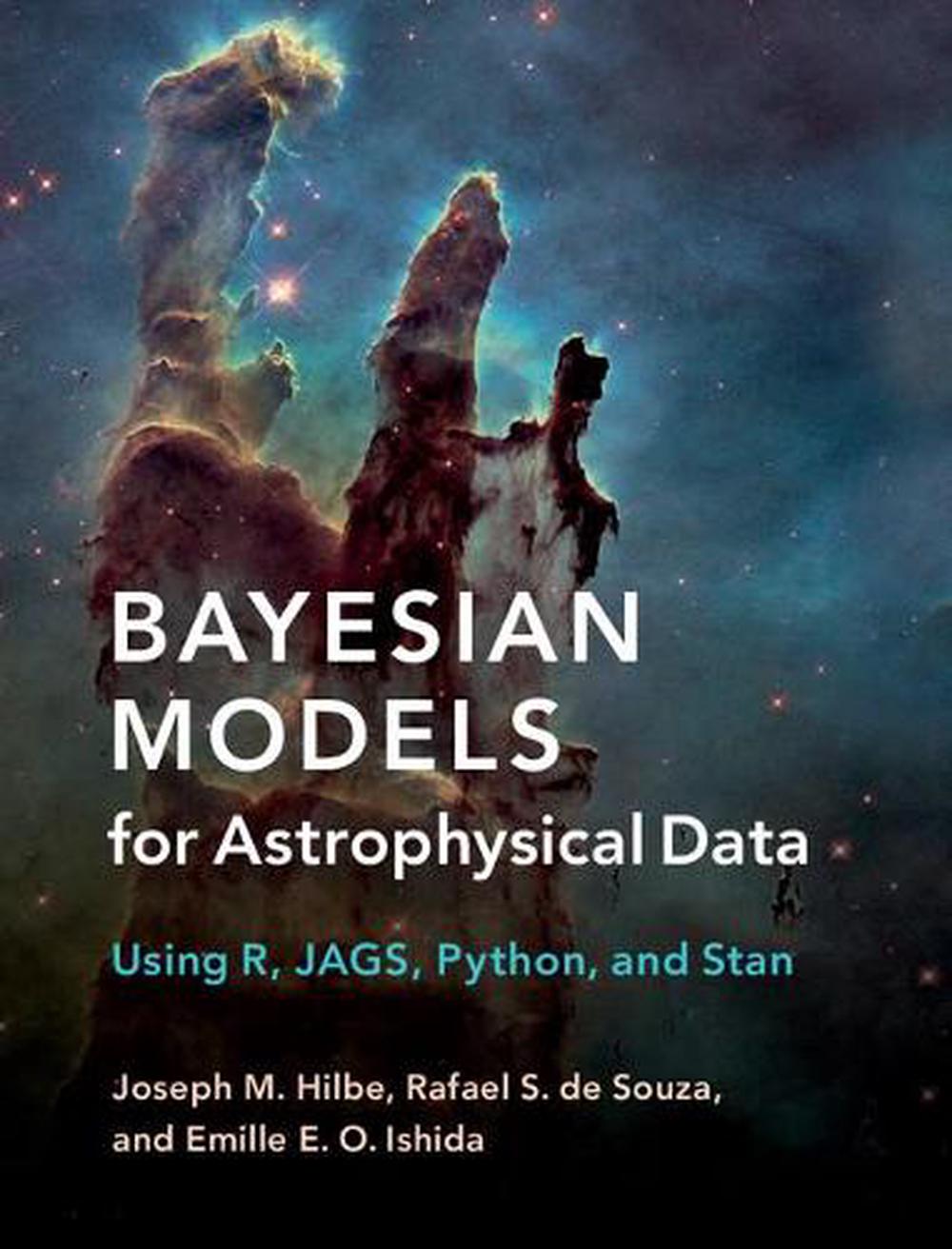
Bayesian Models for Astrophysical Data
using r, jags, python, and stan
$253.67
- Hardcover
408 pages
- Release Date
27 April 2017
Summary
This comprehensive guide to Bayesian methods in astronomy enables hands-on work by supplying complete R, JAGS, Python, and Stan code, to use directly or to adapt. It begins by examining the normal model from both frequentist and Bayesian perspectives and then progresses to a full range of Bayesian generalized linear and mixed or hierarchical models, as well as additional types of models such as ABC and INLA. The book provides code that is largely unavailable elsewhere and includes details on …
Book Details
| ISBN-13: | 9781107133082 |
|---|---|
| ISBN-10: | 1107133084 |
| Author: | Joseph M. Hilbe, Rafael S. De Souza, Emille E.O. Ishida |
| Publisher: | Cambridge University Press |
| Imprint: | Cambridge University Press |
| Format: | Hardcover |
| Number of Pages: | 408 |
| Release Date: | 27 April 2017 |
| Weight: | 1.10kg |
| Dimensions: | 194mm x 247mm |
What They're Saying
Critics Review
‘This volume is a very welcome addition to the small but growing library of resources for advanced analysis of astronomical data. Astronomers are often confronted with complex constrained regression problems, situations that benefit from computationally intensive Bayesian approaches. The authors provide a unique and sophisticated guide with tutorials in methodology and software implementation. The worked examples are impressive. Many astronomers use Python and will benefit from the less familiar capabilities of R, Stan, and JAGS for Bayesian analysis. I suspect the work will also be useful to scientists in other fields who venture into the world of Bayesian computational statistics.’ Eric D. Feigelson, Pennsylvania State University, author of Modern Statistical Methods for Astronomy ‘Encyclopaedic in scope, a treasure trove of ready code for the hands-on practitioner.’ Ben Wandelt, Paris Institute of Astrophysics, Institut Lagrange de Paris, Universite Paris-Sorbonne ‘This informative book is a valuable resource for astronomers, astrophysicists, and cosmologists at all levels of their career. From students starting out in the field to researchers at the frontiers of data analysis, everyone will find insightful techniques accompanied by helpful examples of code. With this book, Hilbe, de Souza, and Ishida are firmly taking astrostatistics into the twenty-first century.’ Roberto Trotta, Imperial College London, author of The Edge of the Sky ‘… the focus of the book is not on providing a full understanding of how the distributions arise, but to give guidelines on how to write code for applications, including building multi-level models, and here it succeeds well, and is an excellent resource in conjunction with powerful packages such as STAN and JAGS.’ Alan Heavens, The Observatory ‘This volume is a very welcome addition to the small but growing library of resources for advanced analysis of astronomical data. Astronomers are often confronted with complex constrained regression problems, situations that benefit from computationally intensive Bayesian approaches. The authors provide a unique and sophisticated guide with tutorials in methodology and software implementation. The worked examples are impressive. Many astronomers use Python and will benefit from the less familiar capabilities of R, Stan, and JAGS for Bayesian analysis. I suspect the work will also be useful to scientists in other fields who venture into the world of Bayesian computational statistics.’ Eric D. Feigelson, Pennsylvania State University, author of Modern Statistical Methods for Astronomy ‘Encyclopaedic in scope, a treasure trove of ready code for the hands-on practitioner.’ Ben Wandelt, Paris Institute of Astrophysics, Institut Lagrange de Paris, Universite Paris-Sorbonne ‘This informative book is a valuable resource for astronomers, astrophysicists, and cosmologists at all levels of their career. From students starting out in the field to researchers at the frontiers of data analysis, everyone will find insightful techniques accompanied by helpful examples of code. With this book, Hilbe, de Souza, and Ishida are firmly taking astrostatistics into the twenty-first century.’ Roberto Trotta, Imperial College London, author of The Edge of the Sky ‘… the focus of the book is not on providing a full understanding of how the distributions arise, but to give guidelines on how to write code for applications, including building multi-level models, and here it succeeds well, and is an excellent resource in conjunction with powerful packages such as STAN and JAGS.’ Alan Heavens, The Observatory
About The Author
Joseph M. Hilbe
Joseph M. Hilbe is Solar System Ambassador with NASA’s Jet Propulsion Laboratory, California Institute of Technology, Adjunct Professor of Statistics at Arizona State University, and Professor Emeritus at the University of Hawaii. He is currently President of the International Astrostatistics Association (IAA) and was awarded the IAA’s 2016 Outstanding Contributions to Astrostatistics medal, the association’s top award. Hilbe is an elected Fellow of both the American Statistical Association and the IAA and is a full member of the American Astronomical Society. He has authored nineteen books on statistical modeling, including leading texts on modeling count and binomial data. His book, Modeling Count Data (Cambridge, 2014) received the 2015 PROSE honorable mention for books in mathematics. Rafael S. de Souza is a researcher at Eoetvos Lorand University, Budapest. He is currently Vice-President for development of the International Astrostatistics Association (IAA) and was awarded the IAA’s 2016 Outstanding Publication in Astrostatistics award. He has authored dozens of scientific papers, serving as the leading author for over twenty of them. Emille E. O. Ishida is a researcher at the Universite Clermont-Auvergne (Universite Blaise Pascal), France. She is cochair of the Cosmostatistics Initiative and coordinator of its Python-related projects. She is a specialist in machine learning applications to astronomy with special interests in type Ia supernovae spectral characterization, classification, and cosmology. She has been the lead author of numerous articles in prominent astrophysics journals and currently serves as chair of the IAA public relations committee.
Returns
This item is eligible for free returns within 30 days of delivery. See our returns policy for further details.




